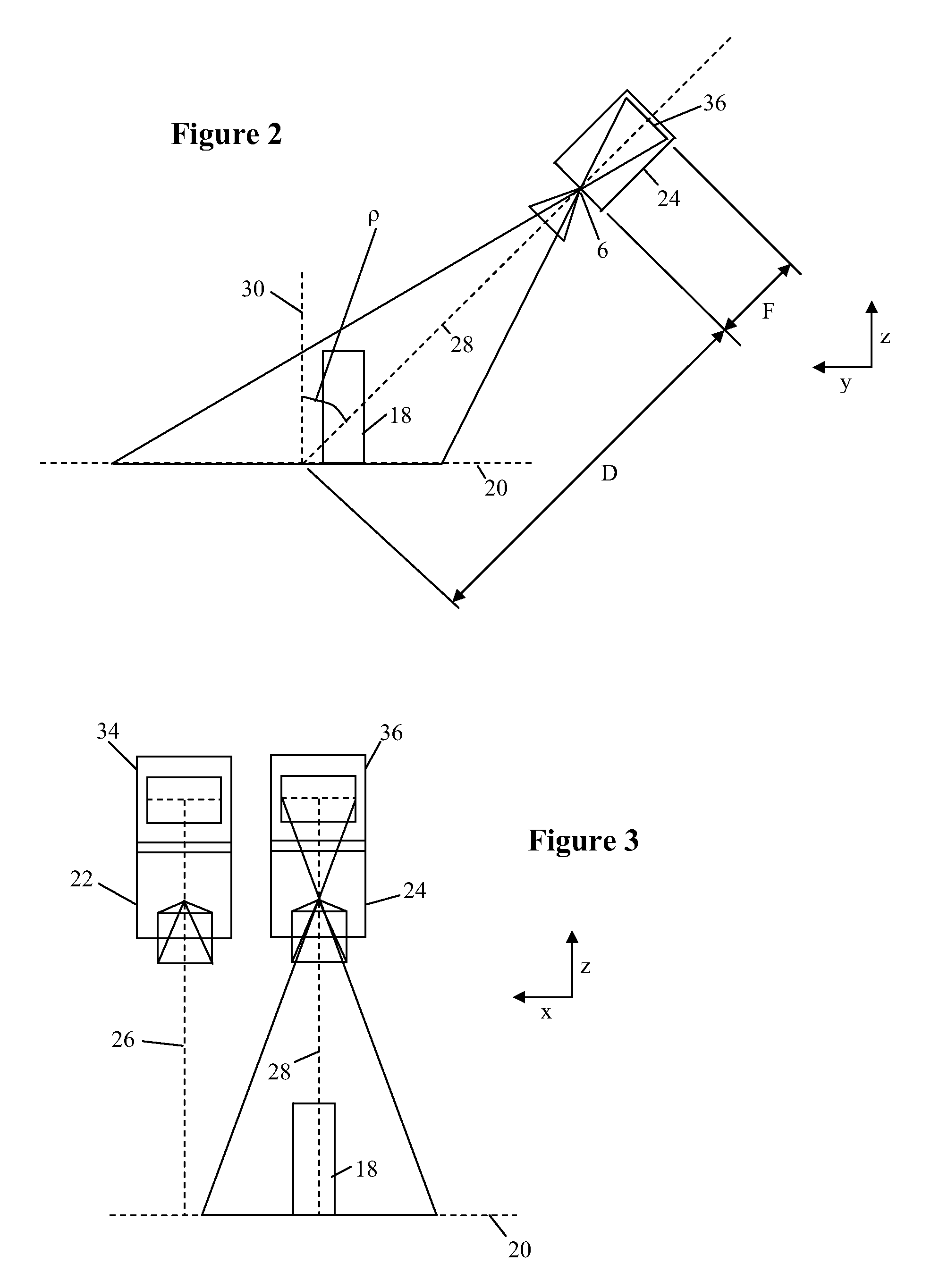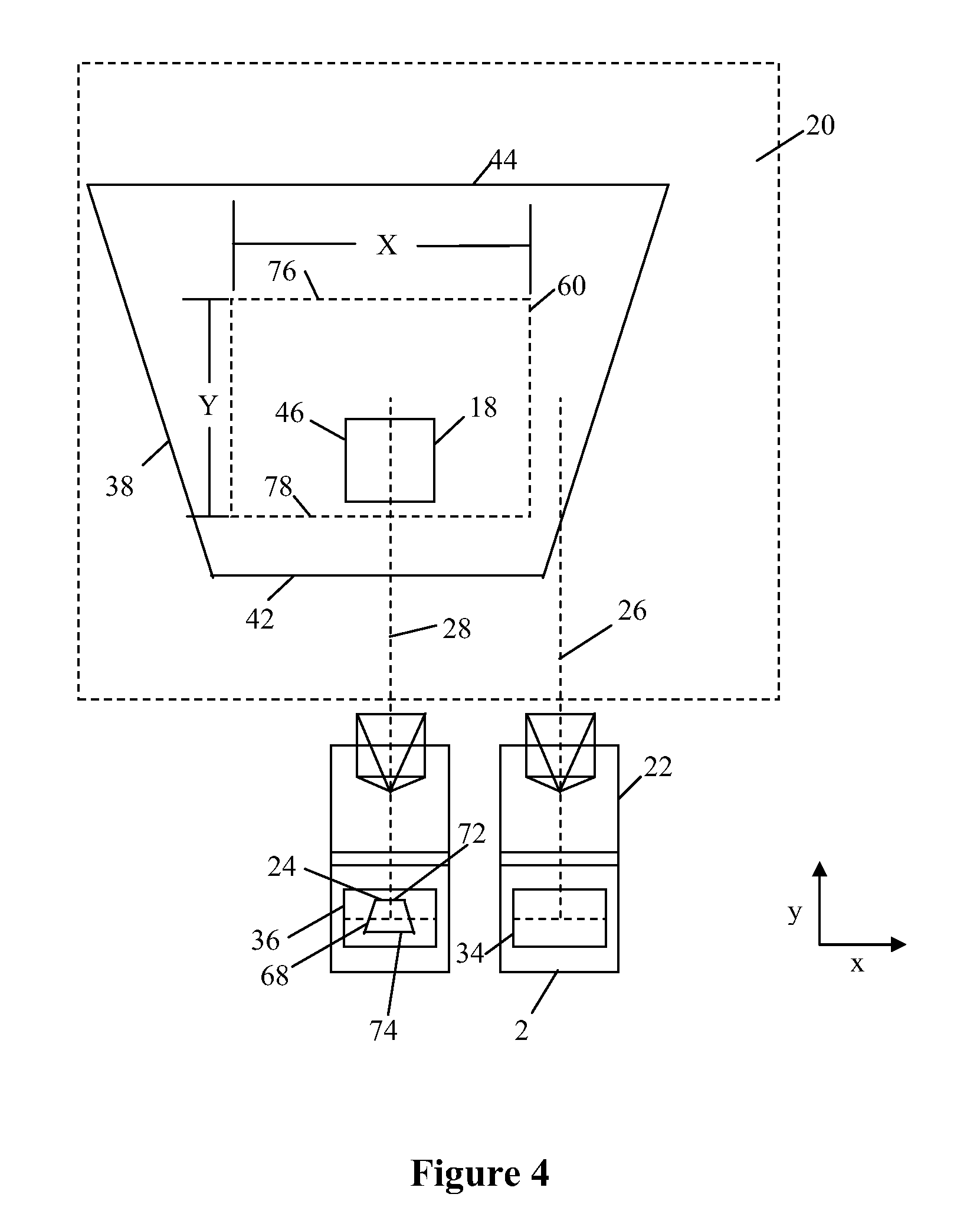3D optical illusions from off-axis displays
a technology of optical illusions and display surfaces, applied in the field of off-axis displays, can solve the problems of not providing appropriate occlusion or shading for objects, the optical and mechanical technologies required for producing such images also tend to be quite expensive, and the ability of known parallax displays to project dimensional perspective forward of the plane of the image display surfa
- Summary
- Abstract
- Description
- Claims
- Application Information
AI Technical Summary
Benefits of technology
Problems solved by technology
Method used
Image
Examples
Embodiment Construction
[0037]Two or more offset images of the same object are captured from off-axis camera perspectives and displayed from a display surface along a similar off-axis viewing perspective. The offset images can be captured by cameras on film or in digital sensor arrays, or can be acquired from virtual cameras, such as computer image generation programs. The images are displayed from a display so that when the displayed images are viewed from the intended off-axis viewing perspective, an illusion of real objects extending outwards from the display surface is created.
[0038]The desired 3D effects in general can be created by the usual stereoscopic or other parallax display of offset images. However, the apparent projections of imaged objects away from the surface of the display (e.g., above or below the display surface) at off-axis angles of view are made possible by either manipulation (e.g., distortion) of the offset images to produce a scene with correct proportions when viewed from off axi...
PUM
 Login to View More
Login to View More Abstract
Description
Claims
Application Information
 Login to View More
Login to View More - R&D
- Intellectual Property
- Life Sciences
- Materials
- Tech Scout
- Unparalleled Data Quality
- Higher Quality Content
- 60% Fewer Hallucinations
Browse by: Latest US Patents, China's latest patents, Technical Efficacy Thesaurus, Application Domain, Technology Topic, Popular Technical Reports.
© 2025 PatSnap. All rights reserved.Legal|Privacy policy|Modern Slavery Act Transparency Statement|Sitemap|About US| Contact US: help@patsnap.com



